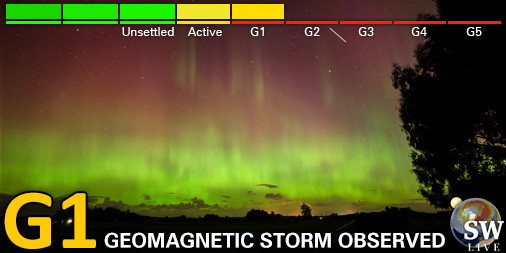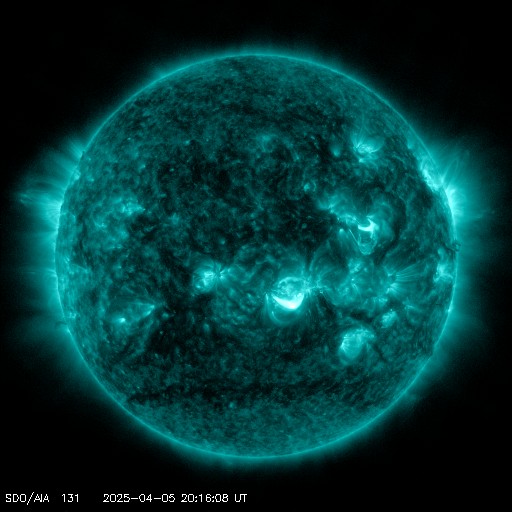Viewing archive of Tuesday, 18 February 2014
Daily bulletin on solar and geomagnetic activity from the SIDC
Issued: 2014 Feb 18 1324 UTC
SIDC Forecast
Solar flares
Eruptive (C-class flares expected, probability >=50%)
Geomagnetism
Quiet (A<20 and K<4)
Solar protons
Warning condition (activity levels expected to increase, but no numeric forecast given)
| 10cm flux | Ap | |
|---|---|---|
| 18 Feb 2014 | 152 | 007 |
| 19 Feb 2014 | 153 | 007 |
| 20 Feb 2014 | 155 | 008 |
Bulletin
Flaring activity has been in the C-class level in past 24h. NOAA AR 1976 produced the strongest one, a C4.7 flare with peak at 01:33 UT. The complex formed by NOAA ARs 1976, 1977 and 1980 continues to produce C-class flares. NOAA AR 1974 is rotating over the west limb, but has still potential to produce M-class flares. Therefore the warning condition for energetic protons is maintained. A full halo CME erupted at 01:25 UT (first seen by LASCO-C2) as a consequence of a filament eruption in the southeast of the visible solar disc. The bulk of the CME is directed to the southeast, but it can reach the Earth. The calculated speed is 663 km/s, giving an arrival time of February 20, at 20:00 UT (with a ~12h error margin). Geomagnetic conditions are quiet and expected to remain so. There is still a small possibility that the CME from February 13 arrives to the Earth and cause unsettled to active conditions.
Today's estimated international sunspot number (ISN): 093, based on 07 stations.Solar indices for 17 Feb 2014
| Wolf number Catania | 131 |
| 10cm solar flux | 152 |
| AK Chambon La Forêt | 010 |
| AK Wingst | 006 |
| Estimated Ap | 005 |
| Estimated international sunspot number | 078 - Based on 14 stations |
Noticeable events summary
| Day | Begin | Max | End | Loc | Strength | OP | 10cm | Catania/NOAA | Radio burst types | |
|---|---|---|---|---|---|---|---|---|---|---|
| None | ||||||||||
Provided by the Solar Influences Data analysis Center© - SIDC - Processed by SpaceWeatherLive
All times in UTC
Current data suggests there is a slight possibility for aurora to appear at the following high latitude regions in the near future
NorilskLatest news
Latest forum messages
Support SpaceWeatherLive.com!
A lot of people come to SpaceWeatherLive to follow the Sun's activity or if there is aurora to be seen, but with more traffic comes higher server costs. Consider a donation if you enjoy SpaceWeatherLive so we can keep the website online!

Latest alerts
Sunday, 6 April 2025
02:00 UTC - Geomagnetic activity
Minor G1 geomagnetic storm (Kp5) Threshold Reached: 01:50 UTC
Saturday, 5 April 2025
20:30 UTC - Geomagnetic activity
Minor G1 geomagnetic storm (Kp5) Threshold Reached: 20:20 UTC
20:24 UTC - Solar flare
Moderate M1.05 flare
20:09 UTC - Radio Blackout
Minor R1 radio blackout in progress (≥M1 - current: M1.05)
Space weather facts
| Last X-flare | 2025/03/28 | X1.1 |
| Last M-flare | 2025/04/05 | M1.0 |
| Last geomagnetic storm | 2025/04/06 | Kp5 (G1) |
| Spotless days | |
|---|---|
| Last spotless day | 2022/06/08 |
| Monthly mean Sunspot Number | |
|---|---|
| March 2025 | 134.2 -20.4 |
| April 2025 | 148.7 +14.5 |
| Last 30 days | 132.7 -9.9 |





